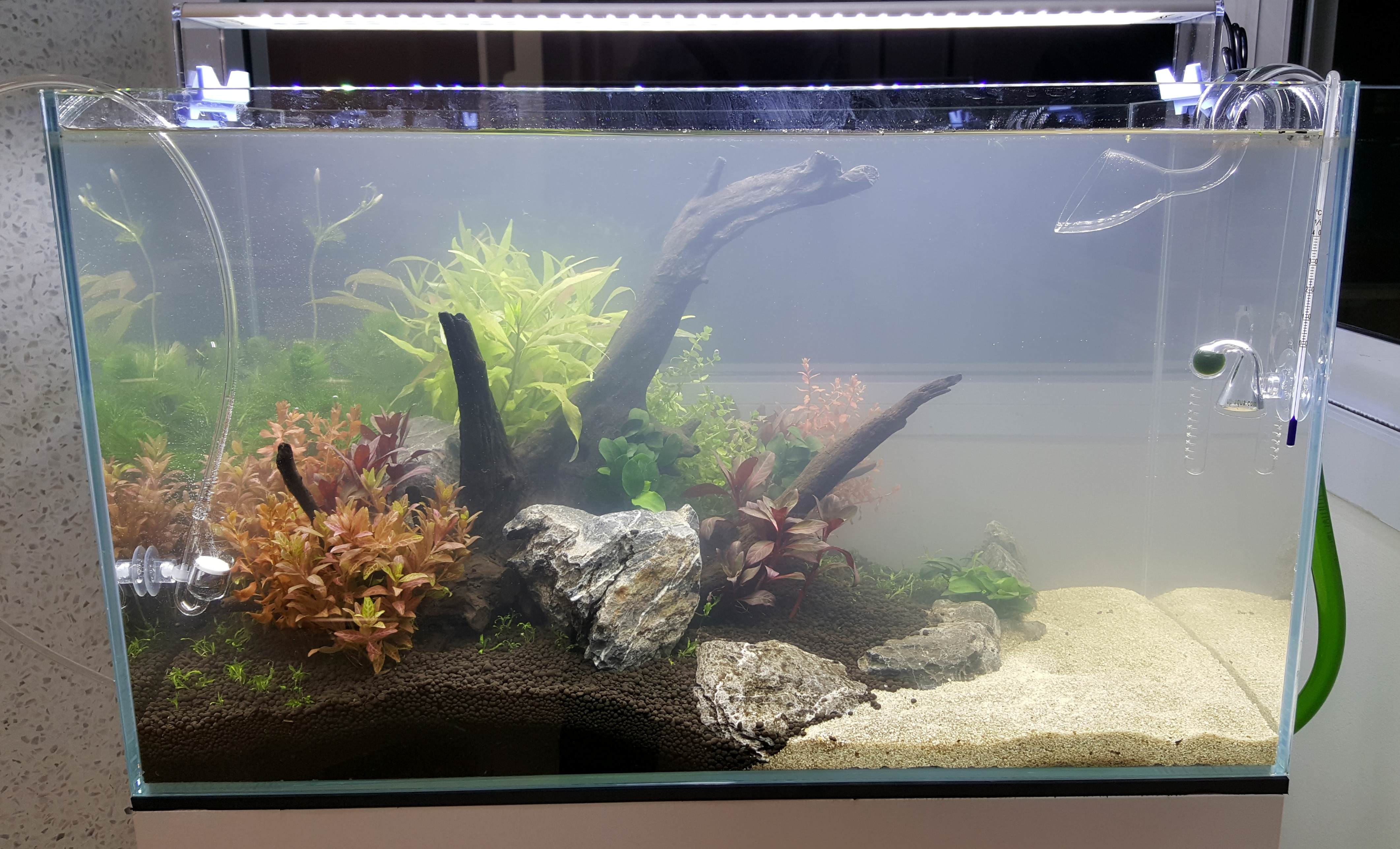
How to Fix Cloudy Aquarium Water: Causes & Remedies
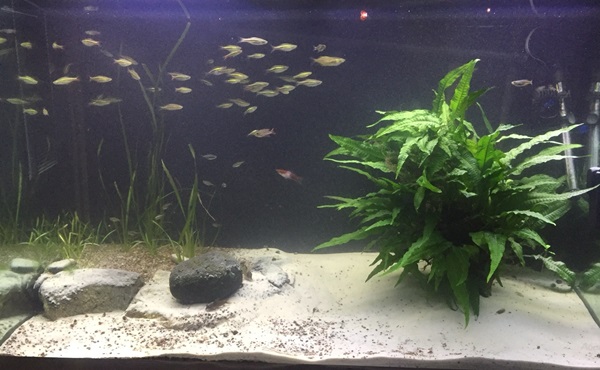
It is easy to get frustrated when you see the cloudy aquarium water and your beloved fish disappear into a muzzy fog. Sometimes the reasons why your tank went from fish heaven to fish apocalypse may be as clouded as the tank water itself.
Rest assured, tank water does not change so drastically without any reason. This means you probably did something that went wrong. But it also means that, once you understand your mistake, you can rectify your mistake through management practices and greatly reduce the chances of it happening in the future.
In this article, you will read about the reasons causing cloudy aquarium water and the remedies to overcome them. In many cases, these problems are easy to solve, and if you act soon enough your fish should pull through without any troublesome.
Also, Read Out Zebra Danio(Care Guide, Breeding, Tankmates)
Contents
Causes and Solutions of Cloudy Aquarium Water
There are many factors to cause cloudy aquarium water and as well as many types. So to rescue your aquarium fish you must understand all the reasons for the cloudy aquarium water as well as how to manage the harmful cloudy water.
New Tank Setup Cloudiness
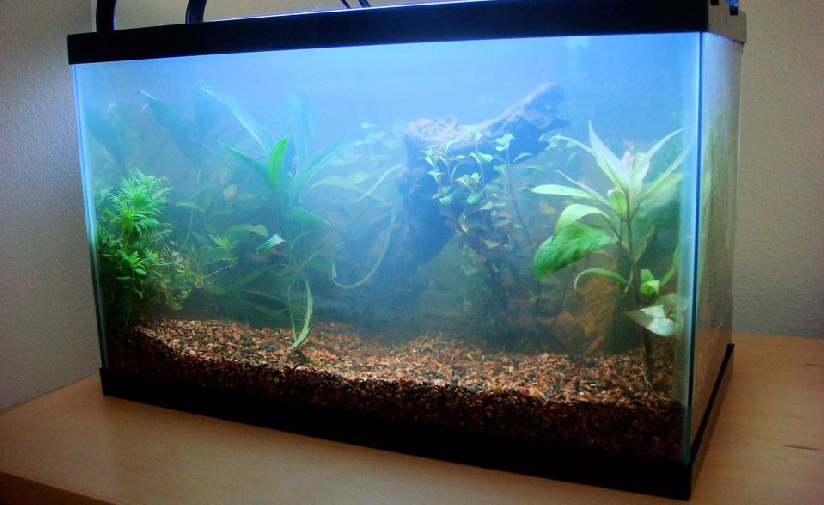
The time you’re bringing the fish tank it seems the most beautiful creature you are welcoming and you just want everything to be set perfect. So the first step that you do is set up the tank and then adding those fishes. Just before you add them it seems all cool and fine, but then a bit later you start seeing something that is white and blurred up.
Also, Check Out 75 Gallon Fish Tank Guide.
You start being fussy and then think of changing the water. Don’t do this because this cloudy water appearance is caused by a bacterial bloom of Nitrosomonas bacteria. These are a beneficial species of nitrifying bacteria which remove deadly ammonia from the water column.
They won’t stay there for long when they’re suspended in the water (hence the cloudiness), eventually, they’ll settle down on the surfaces of your aquarium, especially the filter.
Quick Read: How to Clean Fish Tank.
It could be a dandy time to test your ammonia levels at a point where you start seeing the cloudy water. If they’re looking a little high, use aquarium conditioners to help temporarily detoxify the ammonia present in the aquarium until the bacteria can handle it themselves.
Bacterial Bloom Cloudiness
Cloudy water is also an indication that your current bacteria is not capable enough of handling the amount of new waste that these fishes are producing, it mainly takes place when you have recently added a large amount of fish to the aquarium at once.
One of the common reason could be that a new tank hasn’t been cycled properly, or when a massive water change and aquarium cleaning results in a mini-cycle as the bacterial colonies in your tank go through a stage of re-population. This is a big reason why you always perform partial water changes when performing regular tank maintenance.
So at this time what can you do? Basically cloudy water will take a little time to balance the aquarium as the cloudiness will be cleared up on its own in a few days.
Nevertheless, if you believe the bloom is due to factors such as excessive waste matter accumulation on the substrate or even a dead and decaying fish, you need to take action. All you need to do is perform a partial water change and get out your gravel vacuum.
Algae Bloom Cloudiness
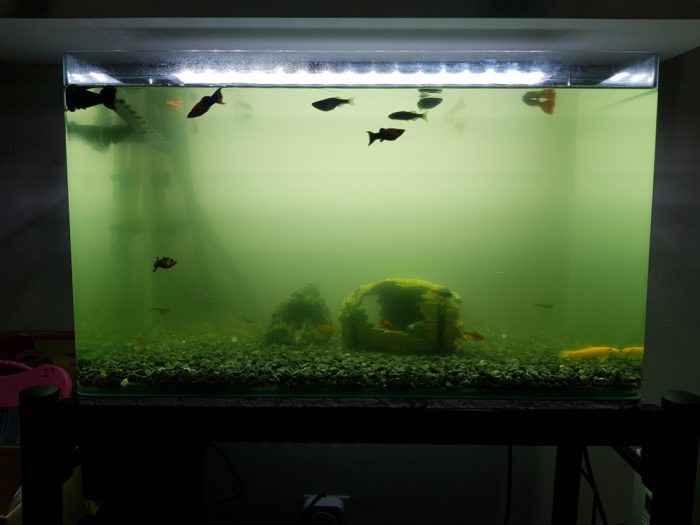
If you have used an aquarium for any amount of time you are likely well aware of algae problems. These plant-like organisms grow on your decorations and the sides of your tank giving a disaster look, and left unchecked can turn your tank into a green mess that creates a problem for the survival of these fishes.
Algae blooms often appear as a greenish hue. If you are going through a problem with algae blooms in your tank the cause is probably related to one of those two factors.
A sudden hike in nitrogen in the form of excessive feeding and/or fish waste may also cause a sudden algae bloom. An overgrowth of algae is another cause of cloudy water. Algae blooms are sometimes distinguishable from bacteria blooms by a slight green color.
The solution to an algae bloom is to perform a water change and then remedy whatever situation caused the bloom. This means either get your feeding practices under control or move your tank to a location where sunlight won’t help algae run amok.
Cloudiness By Overfeeding
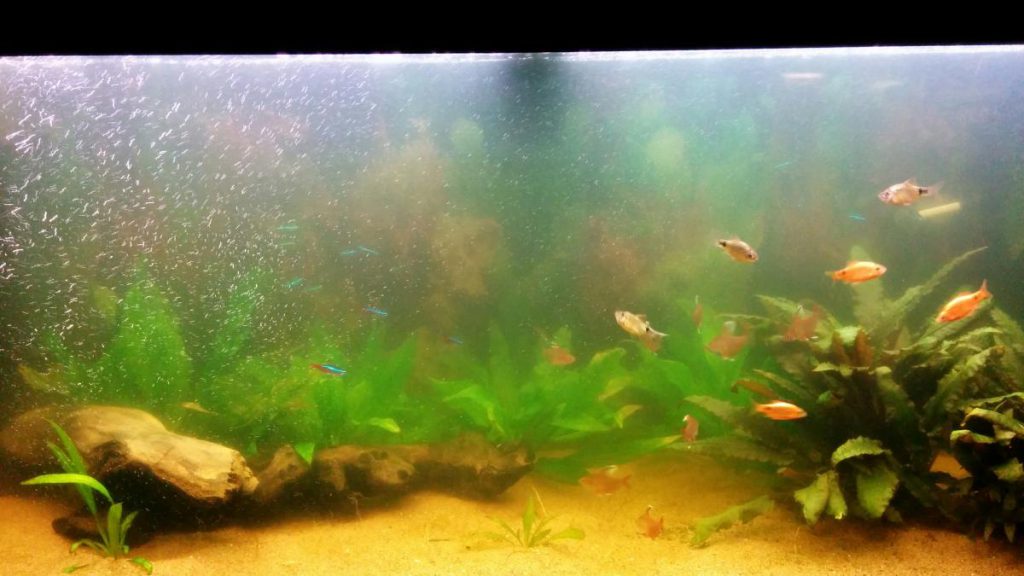
One cause of bacterial bloom is excessive nutrients in the water from overfeeding or decaying plant material. It needs to be addressed quickly as the bacteria will take in oxygen and fish may die from oxygen deprivation. And another cause can be adding medications to the tank without knowing its proper way.
Feeding your fish too much and too often in itself can be the cause of cloudy water. This may be due to food particulates dissolved in the water, a bacterial bloom or both. The guidelines on many fish-food containers advise you to feed multiple times per day.
That’s alright, but if you are going to do that you really need to get a handle on how much your fish are having it, and how much is drifting to the bottom of the tank. Uneaten food decays, and much of it can cause cloudy water.
This can happen in a large tank, but it is also one kind of issue that often happens to well-meaning betta owners. One little betta fish does not eat a whole lot of food, so giving him a pinch of fish flakes or a couple of betta pellets a few times a day will soon impure his little tank.
To remedy this problem perform a partial water change and vacuum the gravel in order to clean up the tank and make it safer for your fish. Then, you need to check out how you are feeding. I prefer to feed once per day and allow them one day of fasting per week. This is healthier for your fish than overfeeding and will help keep your tank cleaner.
Test the water for ammonia regularly to alarm you to from upcoming trouble. At the first signs of any ammonia present partially change the water and do not feed the fish for a few days.
Keep a quarantine tank ready and use that to medicate any sick fish. It is always better to isolate fish in need of treatment and add the medication to a separate tank rather than to the main tank.
For Further Reading: Read Out Dwarf Gourami(Care Guide, Breeding, Tankmates)
Recommendations for Maintenance and Care of Aquarium
Tips that I would highly recommend you to do for the maintenance and care of the fish tank.

Daily
- Have an eye for per day watch to make sure the equipment is running properly.
- The time you’re feeding your fish watch them carefully as their behavioral changes are a good indicator of a potential problem.
Weekly
- Count your fish. In the case of fish death, smaller species can decompose quickly, resulting in ammonia and nitrite spikes, and eventually high nitrate levels.
Every Other Week
- Test your water for vital parameters: pH, carbonate hardness, nitrite, and nitrate.
- Clean the aquarium walls. Filter floss is fairly cheap and very efficient. Start from the bottom upward and rinse filter floss or scrubber frequently.
- Vacuum the gravel to suck all the unwanted dirt present in the tank.
- Change 10-15% of the water so that the place should be fresh and clean for their survival as even they have the right to reside in a clean and pure environment.
- Rinse filter inserts with the extracted water.
Monthly
- Replace filter inserts, cartridges, floss, carbon, and Algone. Rinse entire filter if needed as this will be a good practice of hygiene with respect to their long survival.
- Inspect tubing, connections, airstones, skimmers and other parts for proper operation.
- Clean aquarium top to assure your lighting is not affected.
- Check the expiration dates printed on the boxes and bottles of the aquarium supplies you use. Do not use after the imprinted date. Expired test kits will give false readings and may prompt you to take unnecessary action.
Conclusion
Every aquarium is different and will require a maintenance schedule that is best suited for its unique conditions. These easy to do basic tips would definitely help you to maintain your fish tank.
Use our aquarium maintenance guidelines outlined in this article as a starting point. From there, you will be able to set your own timelines. So now that you’re sort with all the answers to your questions are you ready to begin?
Important: Only make use of clean, fresh water when rinsing the filter or any other aquarium equipment. Never scrub the inside of the filter. Do not use soap, bleach, or chemical cleaners, because they will stamp out the beneficial bacteria required for healthy aquarium life.
